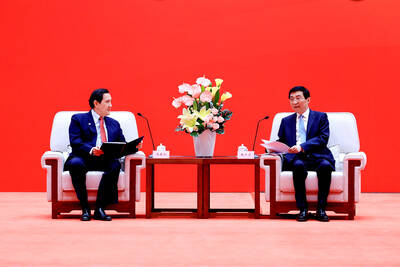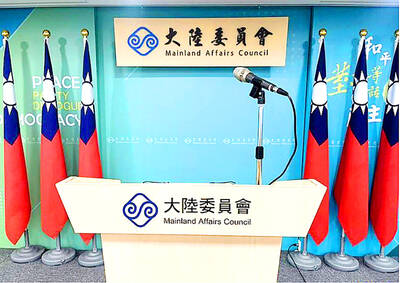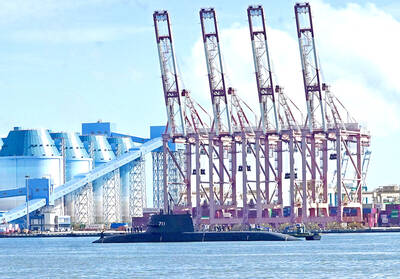The price of New York crude oil hit a record high US$81.24 per barrel yesterday as traders fretted over energy supplies in the forthcoming winter season in the US.
New York's main futures contract, light sweet crude for delivery next month, forged the fresh all-time high in early deals.
The contract later pulled back slightly to stand at US$80.82, which marked a gain of US$0.25 from Monday's close.
In London yesterday, the price of Brent North Sea crude for November delivery rose US$0.12 to US$77.10 per barrel.
Last week, New York crude had smashed through US$80 per barrel for the first ever time as prices were also pressured by hurricane concerns over US energy facilities in the US Gulf of Mexico.
"The market developed a momentum of its own when price movement coincided with tightness in the market," said David Moore, a commodities strategist with Commonwealth Bank of Australia.
"In such a tight market there is potential for it to go up quite sharply without any major new news, but I actually expect some profit-taking at these levels to around US$80," he said.
The US Federal Reserve looked set to trim rates by at least 25 basis points yesterday to keep a credit crunch from pulling the economy into a recession.
"The market will be waiting to see how much the Fed cuts interest rates and whether its statement indicates that there may be further rate cuts or not, and those will affect perceptions of the US economy and the demand for oil," said David Moore, commodity strategist with the Commonwealth Bank of Australia in Sydney.
"The background picture is one of tight oil markets. Data from the US Energy Information Administration has shown declining oil inventories in recent weeks," Moore said.
Hurricane and other supply risks, together with falling US inventories and fund flows into energy from poorly performing equity markets, have fuelled the recent hike in oil prices, which have climbed 33 percent this year.
Goldman Sachs on Monday forecast US oil prices would surge to US$85 a barrel by the end of the year, up US$13 from its previous forecast. It said crude could climb to US$90 due to tight supplies.
Goldman Sachs called OPEC's decision last week to raise output by 500,000 barrels per day (bpd) from Nov. 1 "too little, too late."
US crude oil supplies probably dropped for the fourth week in a row last week as imports shrank further, said industry analysts polled ahead of today's government data.
Forecasts called for a 2 million-barrel draw in crude stocks, a 500,000-barrel decline in gasoline stocks and a 1.2 million-barrel build in distillates, which include heating oil, ahead of peak winter heating demand in the northern hemisphere. Though oil prices have quadrupled since 2002, when adjusted for inflation the price is below the US$90-peaks of the Iranian Revolution in 1979.

CHIP WAR: The new restrictions are expected to cut off China’s access to Taiwan’s technologies, materials and equipment essential to building AI semiconductors Taiwan has blacklisted Huawei Technologies Co (華為) and Semiconductor Manufacturing International Corp (SMIC, 中芯), dealing another major blow to the two companies spearheading China’s efforts to develop cutting-edge artificial intelligence (AI) chip technologies. The Ministry of Economic Affairs’ International Trade Administration has included Huawei, SMIC and several of their subsidiaries in an update of its so-called strategic high-tech commodities entity list, the latest version on its Web site showed on Saturday. It did not publicly announce the change. Other entities on the list include organizations such as the Taliban and al-Qaeda, as well as companies in China, Iran and elsewhere. Local companies need

CRITICISM: It is generally accepted that the Straits Forum is a CCP ‘united front’ platform, and anyone attending should maintain Taiwan’s dignity, the council said The Mainland Affairs Council (MAC) yesterday said it deeply regrets that former president Ma Ying-jeou (馬英九) echoed the Chinese Communist Party’s (CCP) “one China” principle and “united front” tactics by telling the Straits Forum that Taiwanese yearn for both sides of the Taiwan Strait to move toward “peace” and “integration.” The 17th annual Straits Forum yesterday opened in Xiamen, China, and while the Chinese Nationalist Party’s (KMT) local government heads were absent for the first time in 17 years, Ma attended the forum as “former KMT chairperson” and met with Chinese People’s Political Consultative Conference Chairman Wang Huning (王滬寧). Wang

CROSS-STRAIT: The MAC said it barred the Chinese officials from attending an event, because they failed to provide guarantees that Taiwan would be treated with respect The Mainland Affairs Council (MAC) on Friday night defended its decision to bar Chinese officials and tourism representatives from attending a tourism event in Taipei next month, citing the unsafe conditions for Taiwanese in China. The Taipei International Summer Travel Expo, organized by the Taiwan Tourism Exchange Association, is to run from July 18 to 21. China’s Taiwan Affairs Office spokeswoman Zhu Fenglian (朱鳳蓮) on Friday said that representatives from China’s travel industry were excluded from the expo. The Democratic Progressive Party government is obstructing cross-strait tourism exchange in a vain attempt to ignore the mainstream support for peaceful development

DEFENSE: The US would assist Taiwan in developing a new command and control system, and it would be based on the US-made Link-22, a senior official said The Ministry of National Defense is to propose a special budget to replace the military’s currently fielded command and control system, bolster defensive resilience and acquire more attack drones, a senior defense official said yesterday. The budget would be presented to the legislature in August, the source said on condition of anonymity. Taiwan’s decade-old Syun An (迅安, “Swift Security”) command and control system is a derivative of Lockheed Martin’s Link-16 developed under Washington’s auspices, they said. The Syun An system is difficult to operate, increasingly obsolete and has unresolved problems related to integrating disparate tactical data across the three branches of the military,